Could the species composition of forests be impacted by climate change?
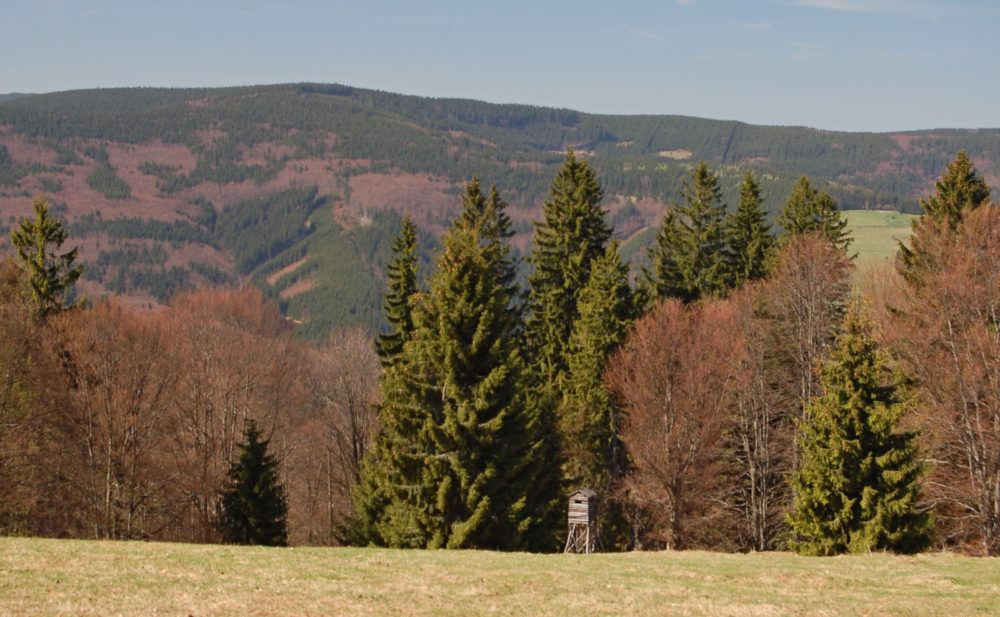 Mixed stands of spruce, fir, and beech are a significant type of natural forest in European conditions, found at higher altitudes in the Alps and Carpathian regions. These mixed mountain forests, composed of European beech, Norway spruce, and silver fir, cover more than 10 million hectares in Europe. An important question is whether and how their species composition will change due to the effects of climate change, and which type of mountain forests can be considered natural from this perspective.
Mixed stands of spruce, fir, and beech are a significant type of natural forest in European conditions, found at higher altitudes in the Alps and Carpathian regions. These mixed mountain forests, composed of European beech, Norway spruce, and silver fir, cover more than 10 million hectares in Europe. An important question is whether and how their species composition will change due to the effects of climate change, and which type of mountain forests can be considered natural from this perspective.
Foresters have faced a major challenge in the past due to the extensive dieback of spruce monocultures, which were highly susceptible to harmful agents such as wind, snow, insects, fungi, and animals. To overcome this challenge, they had to establish mixed coniferous-deciduous stands that are known to be more resistant to various stress factors.
The “Carpathian mixture” mainly consists of Norway spruce, silver fir, and European beech tree species. By mixing tree species with different biological properties and ecological requirements, the habitat and its space can be utilized more effectively.
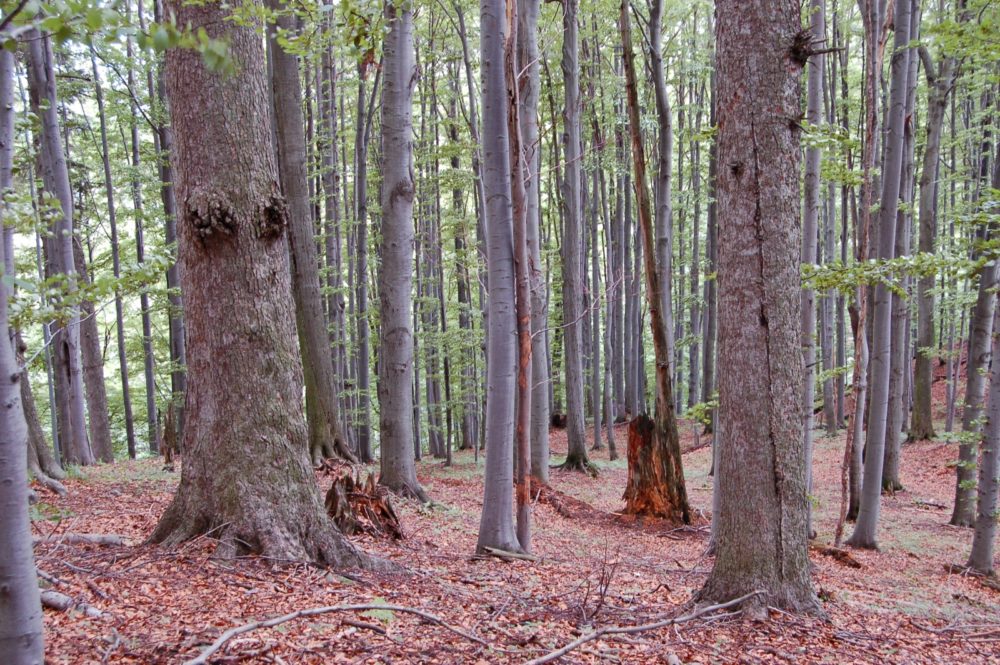 Mixed stands of trees are now widely recognized as having many advantages over non-mixed stands. These benefits include improved physiological processes, greater biodiversity and a more diverse tree species composition. Mixing tree species can also improve growth and production, stand structure, ecological and static stability, and resistance to harmful agents. A diverse mix of tree species can increase resistance to wind and snow, making them more resilient against adverse weather conditions.
Mixed stands of trees are now widely recognized as having many advantages over non-mixed stands. These benefits include improved physiological processes, greater biodiversity and a more diverse tree species composition. Mixing tree species can also improve growth and production, stand structure, ecological and static stability, and resistance to harmful agents. A diverse mix of tree species can increase resistance to wind and snow, making them more resilient against adverse weather conditions.
The impact of global climate change on forest stands has become increasingly evident in recent times. In order to mitigate the effects, experts recommend creating and supporting mixed stands. The focus is on preserving the diverse tree species composition, age diversity, and spatial structure of forests. However, scientists are also concerned about how climate change will affect the composition of forest stands in the future.
Scientists from the National Forestry Center in Zvolen have been conducting research on the changes in species composition of natural mountain forests in Europe and Slovakia. They recently published their findings in the article “Development of selected mixed coniferous-broadleaved stands under self-development regime,” (Vývoj vybraných smíšených jehličnato-listnatých porostů v režimu bezzásahovosti) which was featured in the journal “Reports of Forestry Research 3/2023.” The knowledge gained from this study could also be applied in the Czech Republic.
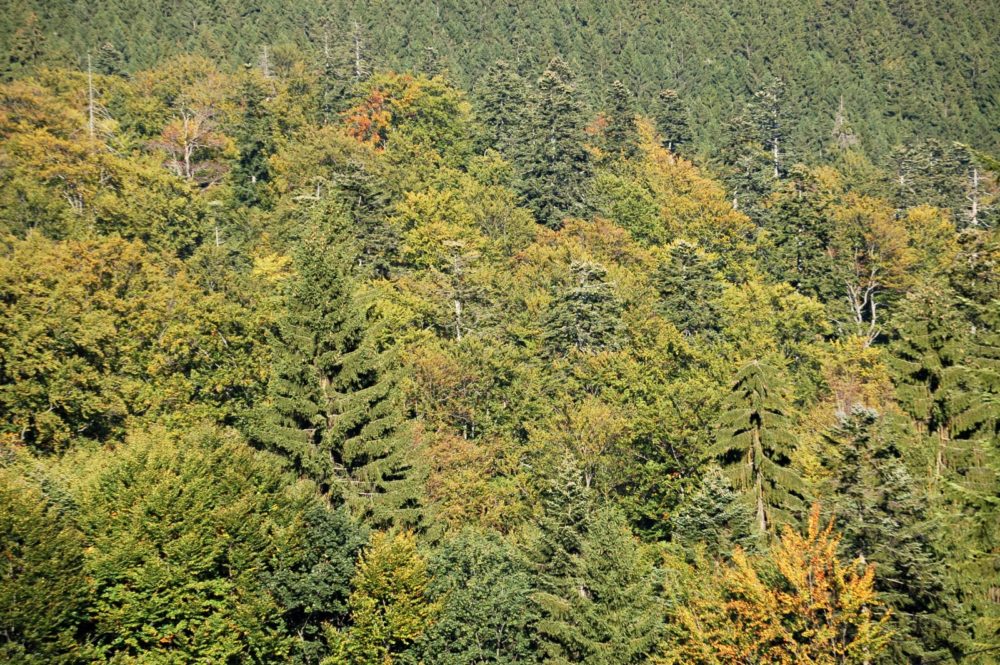 The researchers aimed to study the alterations in the composition of tree species in mixed (spruce-fir-beech) stands of the 5th and 6th forest altitudinal zones in Slovakia. The study was conducted on long-term monitored permanent research plots (TVP) that remained undisturbed for around 50 years.
The researchers aimed to study the alterations in the composition of tree species in mixed (spruce-fir-beech) stands of the 5th and 6th forest altitudinal zones in Slovakia. The study was conducted on long-term monitored permanent research plots (TVP) that remained undisturbed for around 50 years.
In Slovakia, there used to be natural mountain forests covering an area of over 250,000 hectares, particularly in the 4th and 5th forest altitudinal zones. Currently, mixed stands of spruce, fir, and beech (with at least 51% representation of beech) grow on an area of approximately 128,000 hectares.
The species composition of forest stands in individual permanent research areas has changed significantly over the course of approximately 50 years, according to scientists.
Over recent decades, silver fir has retreated from Slovakian forests, with its representation falling from 14.01% to 4.0%.
European beech has a strong competitive ability against other tree species in areas where it grows best, i.e., nourishing habitats at altitudes of 400-700 meters. In recent years, this competitive ability has significantly increased due to the shift of tree species areas caused by the effects of climate change.
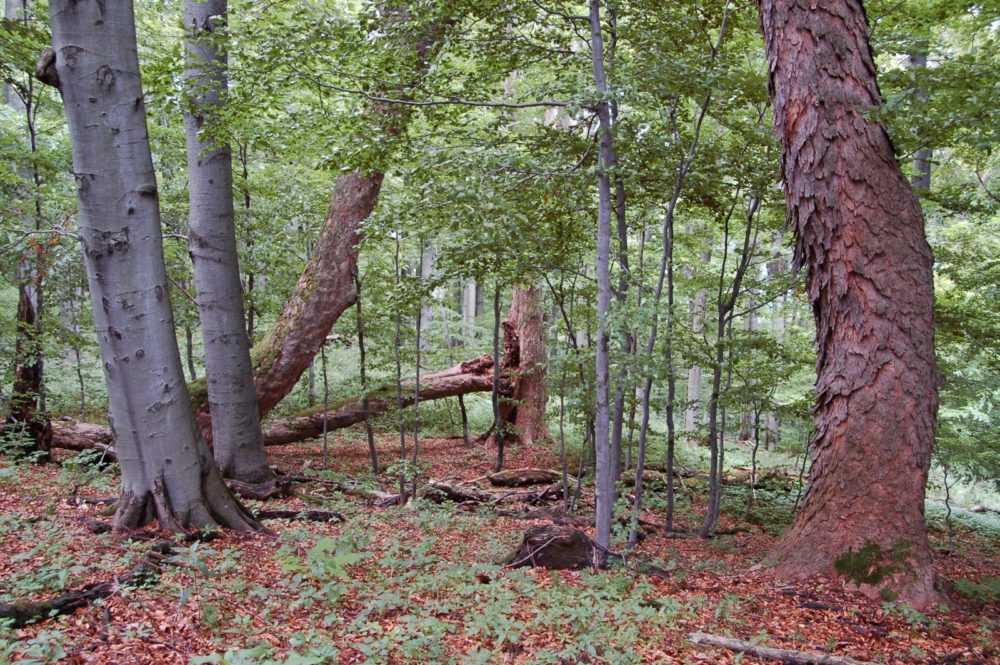 At TVP Stará Pila, the percentage of coniferous trees decreased over a period of 45 years, from 57% to 24%. The largest decrease was observed in case of silver fir, which went down from 15% to 30%. The percentage of Norway spruce also decreased by 7 to 11%. In contrast, the proportion of European beech increased by 12 to 15%, and the representation of other deciduous trees rose to almost 8%, mostly sycamore maple.
At TVP Stará Pila, the percentage of coniferous trees decreased over a period of 45 years, from 57% to 24%. The largest decrease was observed in case of silver fir, which went down from 15% to 30%. The percentage of Norway spruce also decreased by 7 to 11%. In contrast, the proportion of European beech increased by 12 to 15%, and the representation of other deciduous trees rose to almost 8%, mostly sycamore maple.
Over the course of 45 years at TVP Motyčky, the percentage of conifers has decreased to 40%. Among the conifers, the representation of silver fir has dropped by up to 30%. Meanwhile, the representation of Norway spruce has increased by 3%, the representation of European beech has increased by 24%, and the representation of sycamore maple has also slightly increased.
After 55 years, the proportion of conifers at TVP Korytnica has remained practically unchanged, making up 35 to 49% of the forest. The share of spruce has increased by 7%, while beech has only increased by 1%. However, the representation of fir has decreased by 7%. The reason for the development of these tree species can be explained by the fact that the growth conditions at TVP Korytnica (6th LVS, 930–970 m above sea level) are closer to the optimal conditions for Norway spruce.
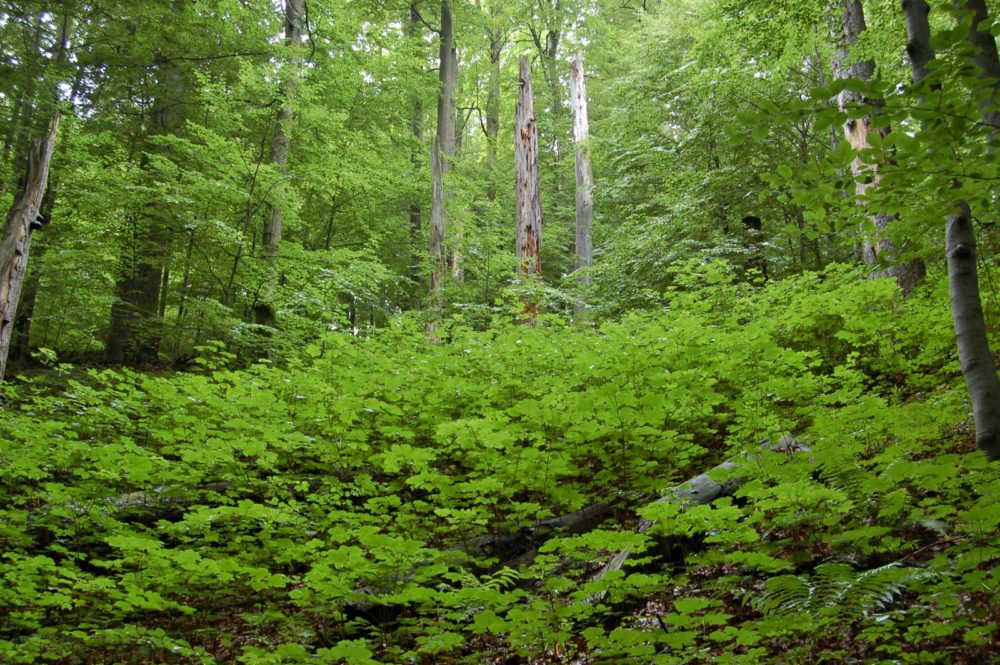 At TVP Hrable, it was observed that there is a high proportion of birch trees. This is due to the neglect of the stand during its younger growth stages. Over the past 50 years, the share of conifers has decreased to 18%, and the Norway spruce has completely disappeared. The share of fir has also decreased by 6%. On the other hand, beech trees have increased their representation by up to 20%. This is because the ecological conditions in the area are better suited for beech trees compared to fir and spruce.
At TVP Hrable, it was observed that there is a high proportion of birch trees. This is due to the neglect of the stand during its younger growth stages. Over the past 50 years, the share of conifers has decreased to 18%, and the Norway spruce has completely disappeared. The share of fir has also decreased by 6%. On the other hand, beech trees have increased their representation by up to 20%. This is because the ecological conditions in the area are better suited for beech trees compared to fir and spruce.
While beech is the most important tree in the stand mixture that was studied, other research suggests that beech may struggle to adapt to climate change due to its sensitivity to drought or water saturation and flooding. This makes beech a risky choice and requires sustainable forest development practices to take its sensitivity into account.
Other scientists caution against excessive optimism in using beech as a replacement for spruce in the context of climate change, citing potential limitations on water availability, xylem embolism, and nutrient absorption.
The use of beech in acidic habitats presents several problems. It is worth noting that the responses of beech are influenced by various factors such as ecotype, altitude, and vegetation stage. Additionally, biotic factors pose a risk, particularly the attack by fungi from the genus Phytophthora. Therefore, it is not recommended to use beech as a replacement for withering spruce on surfaces. Instead, it is advisable to opt for a rich woody composition.
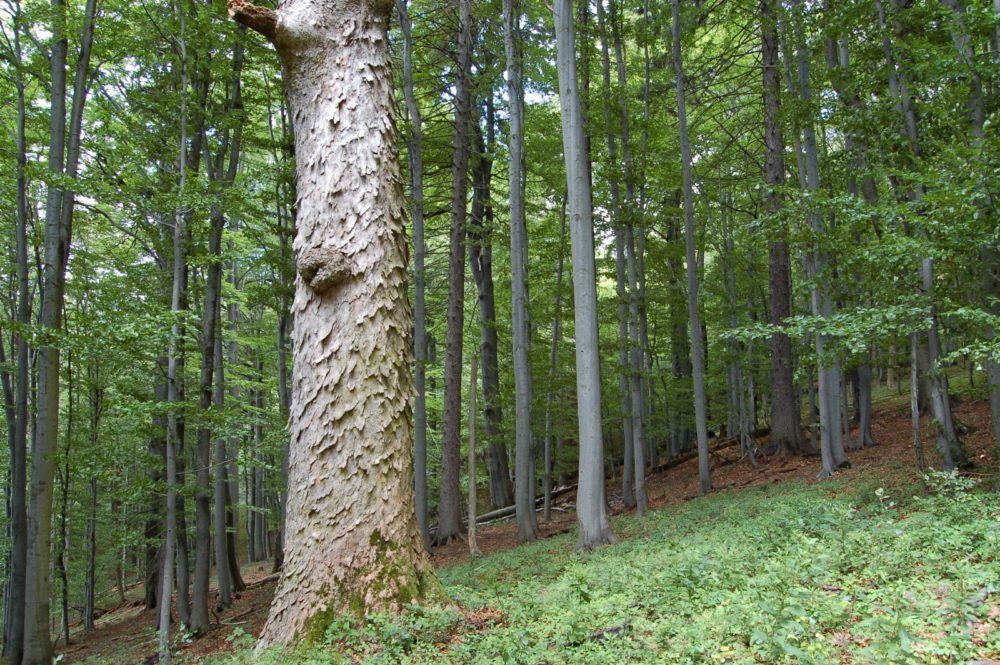 The ability of beech trees to withstand drought is influenced by their origin. In terms of climate change, it is beneficial to have beech trees growing alongside fir and spruce. The optimal percentage of beech trees in the vegetation mixture can vary from 20 to 50%, depending on the natural conditions.
The ability of beech trees to withstand drought is influenced by their origin. In terms of climate change, it is beneficial to have beech trees growing alongside fir and spruce. The optimal percentage of beech trees in the vegetation mixture can vary from 20 to 50%, depending on the natural conditions.
During the observed period, it was found that the share of Norway spruce remained stable or slightly increased. However, the oldest TVP Hrable has disappeared due to its age. As the size of the tree increases, the resistance to drought in Norway spruce decreases significantly. It is beneficial to mix spruce with European beech. While extreme drought has a significant impact on reducing spruce growth, it does not affect beech growth.
The self-thinning effect caused a greater loss of coniferous trees than deciduous trees in all monitored trials.
The paper “Development of selected mixed coniferous-broadleaved stands under self-development regime” (Vývoj vybraných smíšených jehličnato-listnatých porostů v režimu bezzásahovosti) can be downloaded here.
Author of paper: Igor Štefančík, National Forestry Center – Forest Research Institute, Zvolen, Slovakia (Národné lesnícke centrum – Lesnícky výskumný ústav, Zvolen, Slovensko, e-mail: igor.stefancik@nlcsk.org
Prepared by: Jan Řezáč, VÚLHM, v. v. i., e-mail: rezac@vulhm.cz
Illustrative photos: Natural mixed mountain forests with dominant European beech, declining silver fir, Norway spruce and interspersed sycamore maple, Beskydy Mts. Author Jan Řezáč
